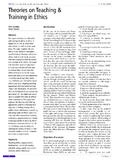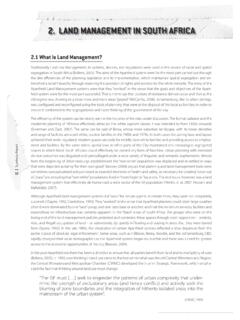Transcription of Innovation, Organizational Capabilities, and the Born ...
1 Innovation, Organizational Capabilities, and the Born-Global FirmAuthor(s): Gary A. Knight and S. Tamar CavusgilSource: Journal of International Business Studies, Vol. 35, No. 2 (Mar., 2004), pp. 124-141 Published by: Palgrave Macmillan JournalsStable URL: : 15/08/2010 11:54 Your use of the JSTOR archive indicates your acceptance of JSTOR's Terms and Conditions of Use, available JSTOR's Terms and Conditions of Use provides, in part, that unlessyou have obtained prior permission, you may not download an entire issue of a journal or multiple copies of articles, and youmay use content in the JSTOR archive only for your personal, non-commercial contact the publisher regarding any further use of this work. Publisher contact information may be obtained copy of any part of a JSTOR transmission must contain the same copyright notice that appears on the screen or printedpage of such is a not-for-profit service that helps scholars, researchers, and students discover, use, and build upon a wide range ofcontent in a trusted digital archive.
2 We use information technology and tools to increase productivity and facilitate new formsof scholarship. For more information about JSTOR, please contact Macmillan Journals is collaborating with JSTOR to digitize, preserve and extend access to Journal ofInternational Business of International Business Studies (2004) 35, 124-141 ? 2004 Palgrave Macmillan Ltd. All rights reserved 0047-2506 $ Innovation, Organizational capabilities, and the born-global firm Gary A Knight' and S Tamar Cavusgil2 'College of Business, Florida State University, Tallahassee, FL, USA; 2 Eli Broad Graduate School of Business, Michigan State University, East Lansing, USA Correspondence: Dr GA Knight, College of Business, Florida State University, Tallahassee, FL 32306- 1110, USA. Tel: +1 850 644 1140 Fax: +1 850 644 4098 E-mail: Received: 19 November 2002 Revised: 19 October 2003 Accepted: 19 November 2003 Online publication date: 8 January 2004 Abstract We investigate born-global firms as early adopters of internationalization - that is, companies that expand into foreign markets and exhibit international business prowess and superior performance, from or near their founding.
3 Our explication highlights the critical role of innovative culture, as well as knowledge and capabilities, in this unique breed of international, entrepre- neurial firm. Case studies are analyzed to better understand the early internationalization phenomenon and reveal key orientations and strategies that engender international success among these innovative firms. Case findings are then validated in a survey-based study. Despite the scarce resources typical of young firms, our findings reveal that born-global firms leverage a distinctive mix of orientations and strategies that allow them to succeed in diverse international markets. Findings have important implications for the internationalization of contemporary firms. Journal of International Business Studies (2004) 35, 124-141. doi: I 0. 1 057 I Keywords: early adopters of internationalization; innovation and capabilities; born- global firms Innovation, knowledge, and capabilities have been central themes of research on the strategy and performance of the firm.
4 Companies that operate internationally from an early stage in their development - early adopters of internationalization or 'born- global firms' - are emerging in substantial numbers worldwide. Despite the scarce financial, human, and tangible resources that characterize most new businesses, these early internationalizing firms leverage innovativeness, knowledge, and capabilities to achieve considerable foreign market success early in their evolu- tion. Sometimes referred to as international new ventures or global start-ups, they have come of age during the current era of globalization and advanced technologies. Consistent with other scholars ( , Autio et al., 2000; Knight and Cavusgil, 1996; Oviatt and McDougall, 1994; Rennie, 1993), we define born globals as business organizations that, from or near their founding, seek superior international business performance from the application of knowledge-based resources to the sale of outputs in multiple countries.
5 The distinguishing feature of these firms is that their origins are international, as demonstrated by management's global focus and the commitment of specific resources to international activities. In contrast to the traditional pattern of firms that operate in the The born-global firm Gary A Knight and S Tamar Cavusil 125 domestic market for many years and gradually evolve into international trade ( , Johanson and Vahlne, 1977), these early adopters of internatio- nalization begin with a global view of their markets, and develop the capabilities needed to achieve their international goals at or near the firm's founding. We focus on the phenomenon of early internationalization and the capabilities that born globals leverage for achieving superior perfor- mance in international markets. Reports on the widespread emergence of born globals in numerous nations ( , Moen and Servais, 2002; Nikkei Sangyoo Shimbun, 1995; Rennie, 1993) indicate that it is an important phenomenon.
6 These businesses first emerged in countries with small domestic markets, but are now appearing in markedly large numbers throughout the world. The phenomenon appears to be rela- tively universal, with researchers noting its occur- rence in virtually all major trading countries ( , Nikkei Sangyoo Shimbun, 1995; OECD, 1997; Simon, 1996). Despite the scarce financial, human, and tangible resources that characterize most new businesses, born globals progress to internationali- zation relatively rapidly - the period from domestic establishment to initial foreign market entry is often 3 years or less (Autio et al., 2000; McDougall and Oviatt, 2000; OECD, 1997; Rennie, 1993). The smaller size typical of young firms appears to confer a sort of flexibility that provides key benefits for succeeding in foreign markets. In the external international business environ- ment, early adoption of internationalization is likely driven by two key trends that have substan- tially reduced the transactions costs of foreign market expansion.
7 The first is the globalization of markets, which involves countless firms in inter- national sourcing, production, and marketing as well as cross-border alliances for product develop- ment and distribution. Globalization is associated with increasing homogenization of buyer prefer- ences around the world, which has made interna- tional business easier by simplifying product development and positioning in foreign markets. The second trend is technological advances in information and communications technologies, production methods, transportation, and interna- tional logistics, which are reducing business trans- actions costs and facilitating extraordinary growth in international trade. Widespread diffusion of e-mail, the Internet, and related technologies has made internationalization a more viable and cost- effective option. Although these trends facilitate early internationali- zation, by themselves they are insufficient to explain intriguing processes at work in the firm's internal environment.
8 Despite their current and projected impact, there has been little research that attempts to explain why born globals internationa- lize early. More significantly, there has been almost no empirical research that examines the factors that drive the superior international performance of these young, highly entrepreneurial firms. In addi- tion, there has been very little empirical research aimed at uncovering the actual bundles of capabil- ities that characterize truly innovative firms, as well as the causal link between the possession of particular types of knowledge, Organizational rou- tines, and superior performance (Lewin and Massini, 2003; Massini et al., 2003). Accordingly, a substantive investigation in this area is overdue. The study reported here explores the role of innovative culture and Organizational capabilities in the early adoption of internationali- zation and subsequent international performance in the born-global firm.
9 We intend to make several contributions. First, we investigate the phenomen- on of early internationalization among a unique breed of international organization. Second, we highlight the importance of several key organiza- tional capabilities that engender international success in born globals - research that has implica- tions not only for these firms but also for inter- nationalizing smaller firms in general. Third, and more specifically, we examine the critical linkages among entrepreneurial orientation, marketing orientation, and other key Organizational capabil- ities in born-global international success. In the process, we extend the innovation literature by linking innovation to the phenomenon of early adoption of internationalization. In the next section, we offer a conceptual frame- work that provides the rationale for the emergence of early adopters of internationalization in the current era.
10 We then summarize the research methods used in this study. Specifically, we conduct a series of exploratory case studies on born-global firms, which lead to a set of hypotheses. We then assess these hypotheses in a confirmatory, survey- based study. Finally, we report on empirical find- ings, providing an overview and substantive dis- cussion. Conceptual foundations The ability to internationalize early and succeed in foreign markets is a function of the internal Journal of International Business Studies The born-global firm Gary A Knight and S Tamar Cavusgil 126 capabilities of the firm (Autio et al., 2000; McDou- gall et al., 1994; Zahra et al., 2000). The importance of internal capabilities is rooted in evolutionary economics (Nelson and Winter, 1982), wherein innovation processes are explicitly described. The evolutionary economics view implies that the superior ability of certain firms to sustain innovation and, as a result, create new knowledge leads to the development of Organizational capabilities, consist- ing of critical competences and embedded routines.






